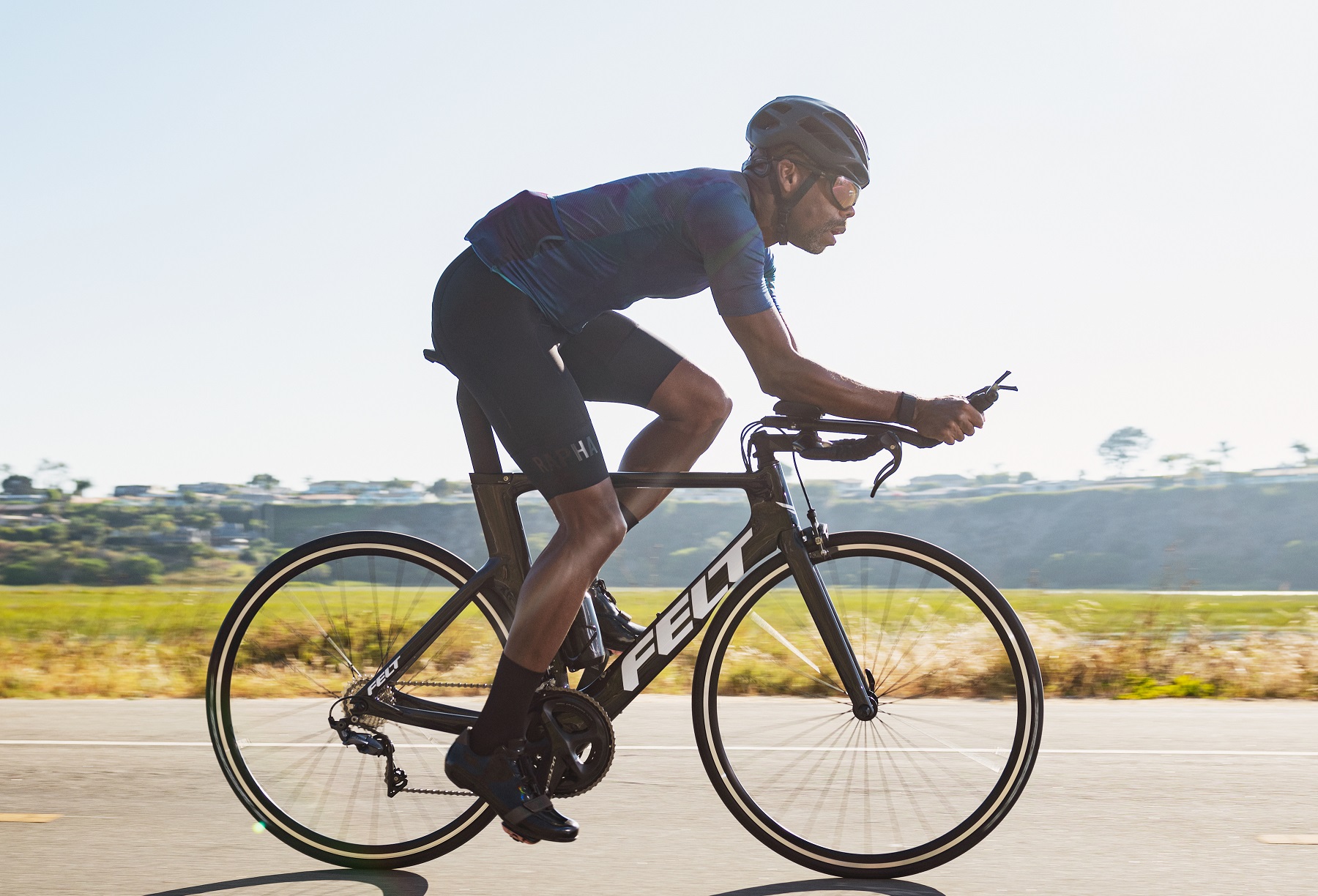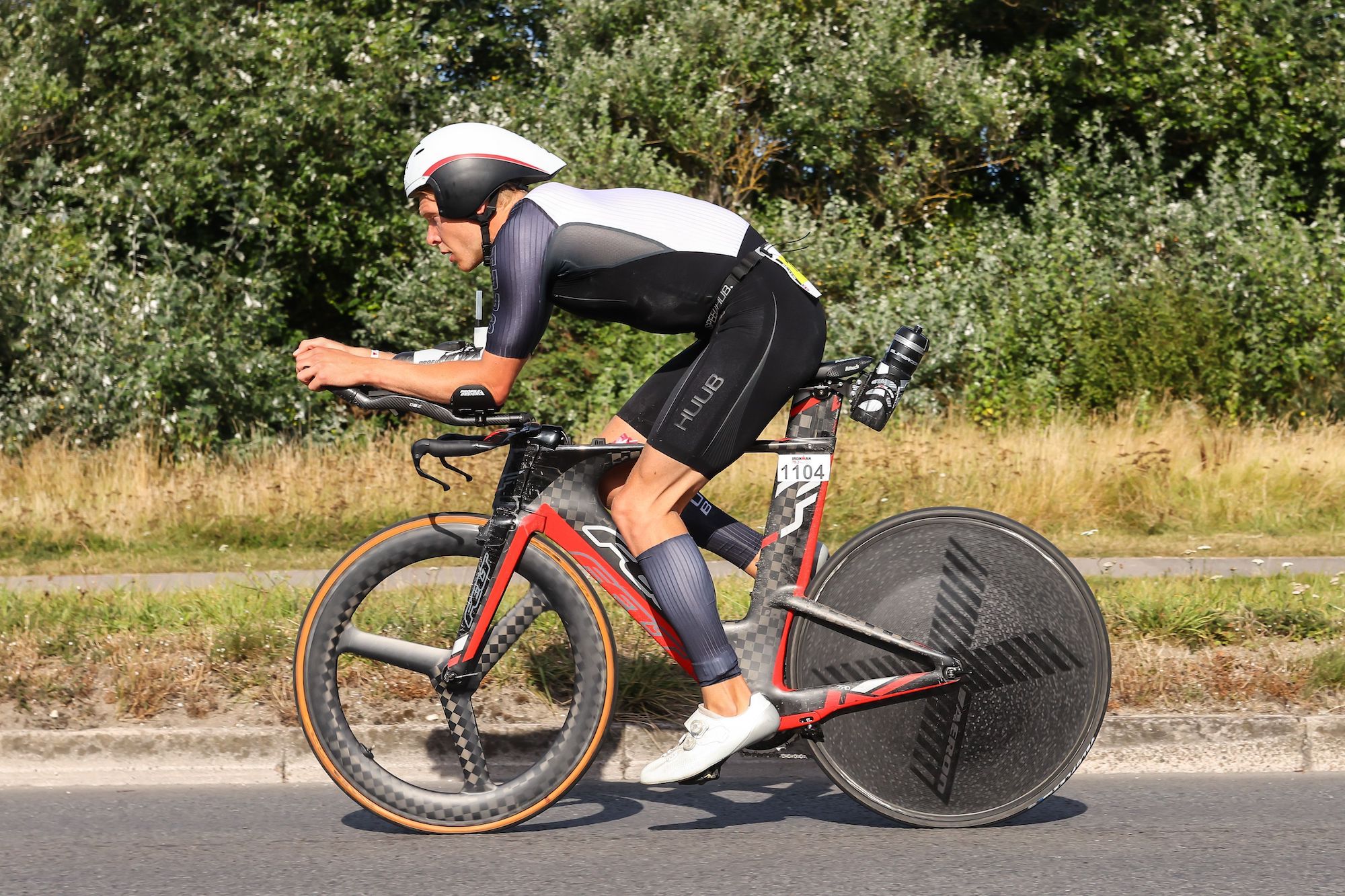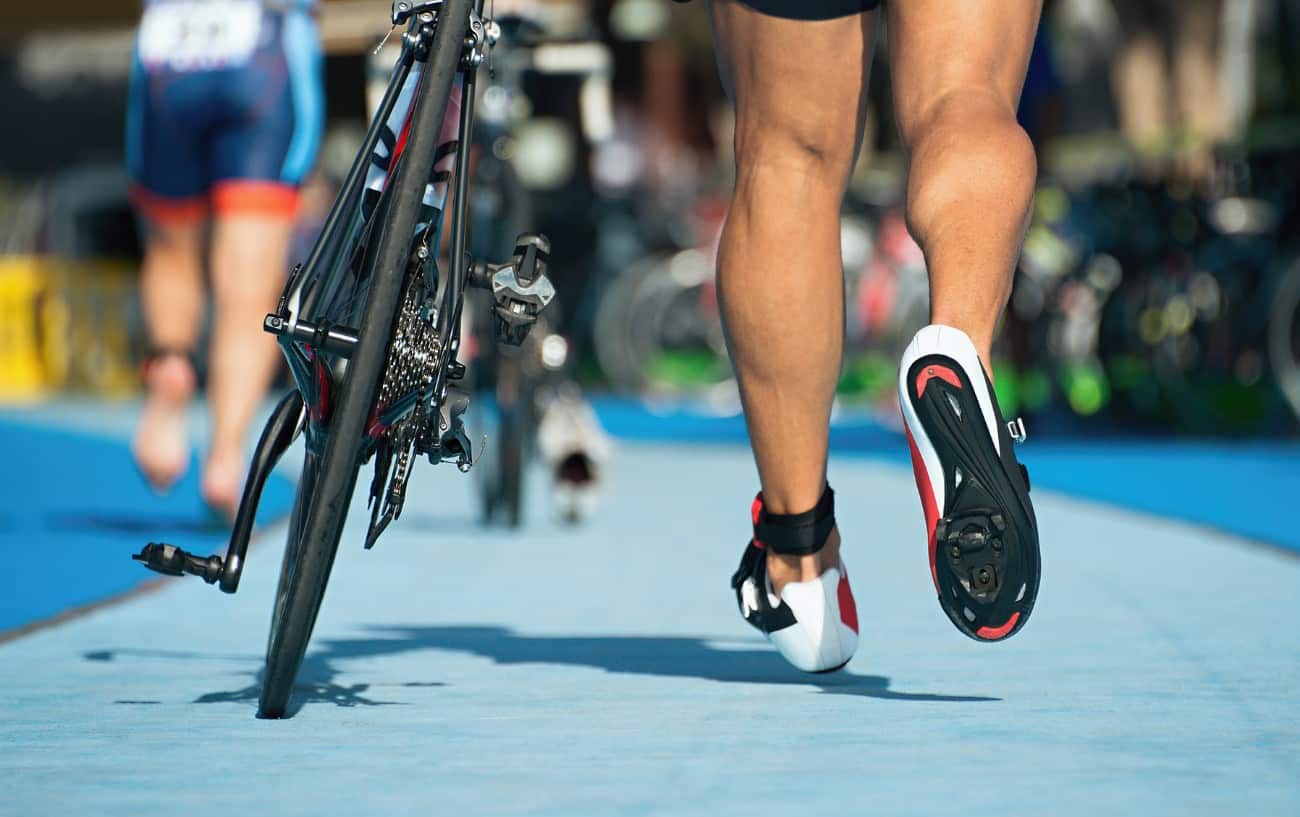

Featured
What Is An Endurance Road Bike
Modified: May 22, 2024
Looking to buy an endurance road bike? Check out our featured collection of endurance road bikes designed for long-distance comfort and performance.
Introduction
When it comes to cycling, there are various types of bikes designed to cater to different riding styles and preferences. One such type is the endurance road bike, which has gained significant popularity among cyclists of all levels. Whether you are an experienced rider looking for a comfortable and efficient bike for long-distance rides, or a beginner seeking a versatile and enjoyable cycling experience, an endurance road bike might be the perfect choice for you.
Endurance road bikes are designed with a specific focus on comfort, stability, and longevity. They are ideal for riders who enjoy spending long hours in the saddle, exploring new routes, and tackling challenging terrains. What sets them apart from other types of road bikes is their unique frame design, geometry, and components that prioritize rider comfort without compromising on performance.
In this article, we will delve deeper into the world of endurance road bikes, exploring their features, benefits, and popular models. Whether you are considering investing in one or simply curious to learn more, this guide will provide you with the information you need to make an informed decision.
So, let’s saddle up and embark on a journey through the world of endurance road bikes.
Definition of an Endurance Road Bike
An endurance road bike is a specific type of road bike that is designed for long-distance riding on varying terrains. Unlike racing bikes that prioritize speed and agility, endurance road bikes are built with a focus on comfort and endurance, allowing riders to go the distance with ease. These bikes are often chosen by cyclists who enjoy long rides, charity events, or multi-day tours.
One of the key defining features of an endurance road bike is its frame design and geometry. Endurance road bike frames are typically made from lightweight materials such as carbon fiber or aluminum, providing the perfect balance between comfort and performance. The geometry of these bikes usually features a more relaxed and upright riding position compared to racing bikes. This allows for reduced strain on the rider’s back, neck, and shoulders, making long hours in the saddle much more enjoyable.
Comfort is further enhanced by the incorporation of features such as wider tires and vibration-damping technology. Endurance road bikes often come equipped with wider tires, ranging from 25mm to 30mm or even more, which provide better traction and absorb road vibrations effectively. Some models may also feature technologies like shock-absorbing seatposts or frame designs that flex to absorb bumps and vibrations, ensuring a smoother ride on rough or uneven surfaces.
In terms of components and gearing, endurance road bikes typically offer a wide range of options to suit different riding preferences. They usually come with compact or semi-compact cranksets, allowing for a broader range of gear ratios that facilitate climbing and maintain speed on flats. The gearing options provide riders with greater flexibility to tackle various terrain types and gradients, making them versatile for a wide range of riding conditions.
Overall, the defining characteristics of an endurance road bike are its focus on comfort, stability, and durability. It is a bike built to provide a smooth and enjoyable ride over long distances, allowing riders to explore new routes, take on challenging terrains, and push their limits without sacrificing comfort.
Frame Design and Geometry
The frame design and geometry of an endurance road bike play a crucial role in determining its comfort and performance. Unlike racing bikes with aggressive and aerodynamic positions, endurance road bikes prioritize a more relaxed and upright riding stance, ensuring a comfortable and enjoyable experience during long rides.
Endurance road bike frames are typically made from lightweight materials such as carbon fiber or aluminum. These materials provide a balance between strength, stiffness, and weight reduction. Carbon fiber frames, in particular, are known for their excellent vibration-damping properties, which contribute to a smoother and more comfortable ride.
The geometry of an endurance road bike is designed to optimize comfort and stability. This is achieved through several key features:
- Head Tube Angle: Endurance road bike frames usually have a slack head tube angle, which results in a more relaxed steering response. This enhances stability and control, especially at higher speeds and on uneven surfaces.
- Wheelbase: The wheelbase, which is the distance between the front and rear axles, is typically longer in endurance road bikes. This helps to provide a more stable ride, especially during descents or when navigating rough terrain.
- Stack and Reach: The stack and reach measurements refer to the vertical and horizontal distances between the bottom bracket and the top of the head tube. Endurance road bikes often have a higher stack and shorter reach compared to racing bikes. This allows for a more upright riding position, reducing strain on the rider’s back, neck, and shoulders.
- Chainstay Length: The length of the chainstays can affect the bike’s stability and responsiveness. Endurance road bikes typically have slightly longer chainstays compared to racing bikes, providing increased stability and a smoother ride.
These frame design and geometry features work together to create a bike that strikes a balance between performance and comfort. The more relaxed riding position and stable handling make endurance road bikes ideal for long-distance rides, where rider comfort and efficiency are essential.
It’s worth noting that the frame design and geometry can vary between different manufacturers and models, so it’s important to test ride various options to find the perfect fit for your body and riding style.
Comfort Features
Comfort is a key consideration when it comes to endurance road bikes. These bikes are specifically designed to provide a smooth and enjoyable riding experience, even over long distances. To achieve this, manufacturers incorporate various comfort features into the design and components of endurance road bikes.
One of the primary comfort features is the use of wider tires. Endurance road bikes typically come with wider tires compared to racing bikes. This not only provides better traction and stability but also allows for lower tire pressure. The lower tire pressure helps to absorb road vibrations and provides a more cushioned ride, especially on rough or uneven surfaces.
Another comfort feature found in endurance road bikes is the incorporation of vibration-damping technology. Carbon fiber frames, known for their excellent vibration-damping properties, are commonly used in endurance road bikes. These frames absorb road vibrations, resulting in a smoother ride and reduced fatigue for the rider.
Additionally, some endurance road bikes feature shock-absorbing seatposts or frame designs that offer flex and compliance. These technologies further enhance comfort by absorbing bumps and vibrations, reducing the impact on the rider’s body.
Comfort is not limited to the frame and components alone. Endurance road bikes often come with ergonomic handlebars and grips, designed to provide a comfortable and secure grip. The shape and design of the handlebars allow for multiple hand positions, reducing strain on the hands, wrists, and shoulders, particularly during long rides.
The saddle, an essential component of any bike, is also a key comfort feature in endurance road bikes. These bikes typically come equipped with wider and more cushioned saddles that offer better support and comfort over extended periods of riding. Many manufacturers also offer the option to upgrade to a saddle that best suits a rider’s specific preferences and anatomical needs.
Overall, the combination of wider tires, vibration-damping technology, ergonomic handlebars, and comfortable saddles in endurance road bikes ensures a more enjoyable and less fatiguing riding experience, particularly on longer rides.
Components and Gearing
The components and gearing of an endurance road bike are important factors that contribute to its performance, versatility, and ability to handle a variety of terrains. These bikes are equipped with specific components and gearing options that cater to the needs of endurance riders.
Endurance road bikes typically feature compact or semi-compact cranksets. These cranksets have smaller chainrings, usually 50/34 or 52/36 teeth, which provide a wider range of gear ratios compared to standard racing cranksets. The smaller chainrings make climbing easier, allowing riders to tackle steep gradients without straining their legs excessively. On the other hand, the larger chainrings offer enough power for efficient pedaling on flat or rolling terrain.
In addition to the compact or semi-compact cranksets, endurance road bikes are often equipped with cassettes that provide a wide range of gears. The cassette typically consists of a combination of smaller and larger cogs, allowing riders to easily switch between gears to match their riding conditions and varying terrain. This versatility is particularly useful during long rides where the terrain may vary from steep climbs to fast descents.
Another important component found in endurance road bikes is the braking system. These bikes commonly feature disc brakes, which provide reliable and consistent stopping power in all weather conditions. Disc brakes offer better modulation and control, giving riders confidence and peace of mind, especially on descents or when riding on wet roads.
Other components on endurance road bikes are chosen for their reliability and durability. This ensures that the bike can withstand the demands of long-distance riding without frequent maintenance or issues. From the derailleur and shifters to the wheelset and pedals, manufacturers select components known for their quality and ability to handle the rigors of endurance riding.
It’s important to note that the specific components and gearing options can vary among different models and brands of endurance road bikes. Some manufacturers may also offer customization options, allowing riders to tailor their bike to their specific preferences and needs.
Overall, the components and gearing of an endurance road bike are carefully selected to provide riders with the range of gears necessary for conquering varied terrains, efficient power transfer, reliable braking, and durability to withstand long rides.
Purpose and Benefits of an Endurance Road Bike
An endurance road bike serves a specific purpose, catering to cyclists who enjoy long-distance rides, multi-day tours, and exploring challenging terrains. The design and features of these bikes offer several benefits that enhance the overall riding experience.
One of the primary benefits of an endurance road bike is comfort. The frame geometry, wider tires, and vibration-damping technology work together to provide a smoother and more comfortable ride. The more relaxed riding position reduces strain on the rider’s back, neck, and shoulders, making it more enjoyable to spend long hours in the saddle. The wider tires and vibration-damping features absorb road vibrations, minimizing fatigue and discomfort, especially on rough or uneven surfaces.
Another key benefit of an endurance road bike is versatility. These bikes are designed to handle a variety of terrains, making them suitable for different types of rides. Whether it’s tackling steep climbs, navigating rolling hills, or cruising on flat roads, the compact or semi-compact cranksets and wide-ranging gearing options provide the necessary gears for every type of terrain. This versatility allows riders to explore new routes, take on challenges, and adapt to changing riding conditions.
Endurance road bikes also offer efficiency in pedaling. The lightweight frame materials and quality components contribute to efficient power transfer, allowing riders to maintain speed and momentum. The ability to efficiently transfer power ensures that riders can cover more distance and tackle long rides with ease.
Moreover, endurance road bikes provide stability and control. The longer wheelbase and slack head tube angle contribute to a more stable ride, particularly at higher speeds and on bumpy or uneven surfaces. This stability instills confidence in riders, allowing them to navigate descents and corners with ease while maintaining control and responsiveness.
Additionally, the use of disc brakes on endurance road bikes adds a significant safety factor. Disc brakes offer reliable and consistent stopping power in all weather conditions, ensuring riders can brake confidently and with precision. This is especially important during long rides, where encountering different weather conditions becomes inevitable.
Overall, the purpose and benefits of an endurance road bike revolve around providing a comfortable, versatile, efficient, and stable riding experience. These bikes are designed to allow cyclists to go the distance, explore new routes, and enjoy the journey without sacrificing rider comfort or compromising on performance.
Popular Endurance Road Bike Models
There are several popular endurance road bike models on the market, each offering its own unique features and benefits. Here are a few notable examples:
- Specialized Roubaix: The Specialized Roubaix is highly regarded as one of the top endurance road bikes. It features a lightweight and compliant frame with Future Shock technology, which provides vertical compliance to absorb road vibrations. The Roubaix is known for its smooth ride quality and stable handling, making it a popular choice among endurance riders.
- Trek Domane: The Trek Domane is another well-known endurance road bike loved by cyclists worldwide. It features an IsoSpeed decoupler, which provides vertical compliance by allowing the seat tube and top tube to move independently. This technology enhances ride quality and comfort on rough roads. The Domane also offers versatile gearing options, disc brakes, and a stable geometry for confident handling.
- Cannondale Synapse: The Cannondale Synapse is a versatile endurance road bike that prioritizes comfort and performance. It features a lightweight and responsive frame, with SAVE micro-suspension technology that absorbs road vibrations. The endurance-oriented geometry provides a comfortable riding position for long hours in the saddle. The Synapse is highly regarded for its smooth ride quality and precise handling.
- Giant Defy: The Giant Defy is a popular choice among endurance riders looking for a comfortable and efficient bike. It features a lightweight and compliant frame with endurance-oriented geometry. The Defy offers wider tire clearance, which enhances comfort and traction. The D-Fuse seatpost technology helps to dampen road vibrations, resulting in a more enjoyable ride over long distances.
- Cervélo C-Series: The Cervélo C-Series is designed to provide endurance riders with a balance between performance and comfort. The frames are constructed using Cervélo’s expertise in aerodynamics, ensuring efficient power transfer. The C-Series models feature disc brakes for reliable stopping power, wider tire clearance, and endurance-oriented geometry for a comfortable riding position.
These are just a few examples of popular endurance road bike models, and there are many other reputable brands offering excellent options in this category. It’s important to test ride different models and consider factors such as frame geometry, components, and features that align with your specific needs and preferences.
Conclusion
Endurance road bikes are designed with a specific focus on comfort, stability, and endurance, making them perfect for riders who enjoy spending long hours in the saddle, tackling challenging terrains, and exploring new routes. These bikes offer a balance between comfort and performance, allowing riders to go the distance without sacrificing rider comfort.
The frame design and geometry of an endurance road bike prioritize a more relaxed and upright riding position, reducing strain on the rider’s body. This promotes a more enjoyable riding experience, especially during long rides. The wider tires and vibration-damping technology enhance comfort by absorbing road vibrations and providing a cushioned ride on rough surfaces.
Moreover, the components and gearing options found on endurance road bikes provide versatility, allowing riders to tackle various terrains and gradients with ease. The compact or semi-compact cranksets and wide-ranging gearing options ensure efficiency and adaptability, making these bikes suitable for different types of rides.
In addition to comfort and versatility, endurance road bikes offer stability and control. The longer wheelbase and slack head tube angle contribute to a stable ride, while features like disc brakes provide reliable stopping power in all weather conditions, ensuring rider safety.
There are several popular endurance road bike models available, each with its own unique features and benefits. The Specialized Roubaix, Trek Domane, Cannondale Synapse, Giant Defy, and Cervélo C-Series are just a few examples of renowned options in this category.
Ultimately, an endurance road bike is an excellent choice for cyclists who prioritize comfort, endurance, and versatility in their riding experience. When selecting an endurance road bike, it is important to consider factors such as frame design, components, and specific features that align with your riding style and preferences.
So, whether you are embarking on multi-day tours, participating in endurance events, or simply seeking a comfortable and efficient bike for long-distance rides, an endurance road bike is the perfect companion to help you enjoy the journey and push your limits without compromising on comfort.









